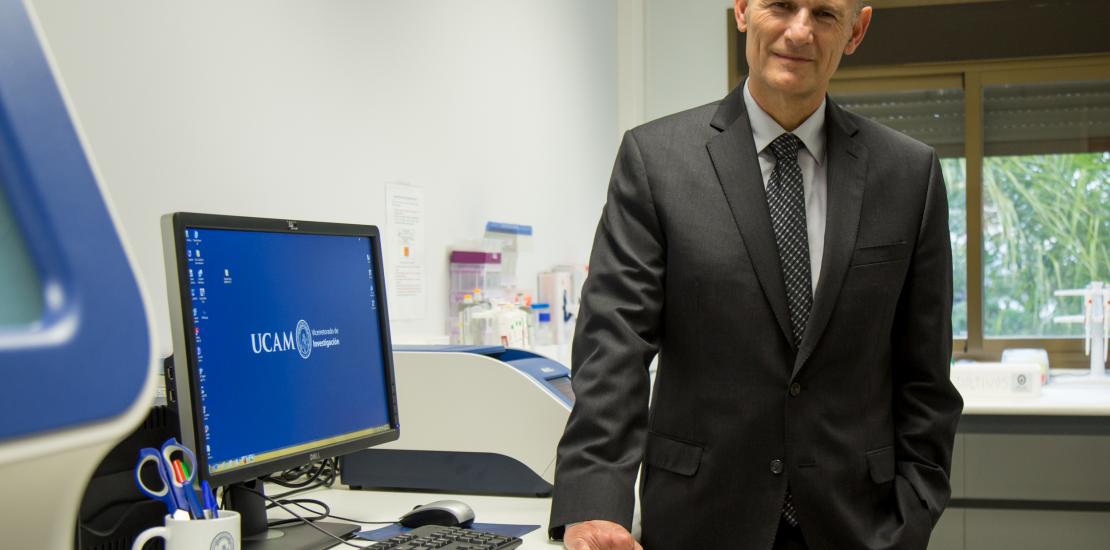Izpisua one step away from applying gene editing in humans
The team led by the Spaniard Juan Carlos Izpisua has succeeded in activating key genes for some diseases with the CRISPR technique without the need to splice the DNA.<br /> With this new technology, unwanted mutations are not generated, this avoids a great obstacle for its application in humans.<br /> "We were thrilled to see the success in mice" have assured the researchers, who are now working on improving the technique and applying it to more diseases, although they also stated that "more safety tests are needed before doing human trials".
The renowned scientific journal Cell publishes this Thursday the progress made by the team of researchers, led by Juan Carlos Izpisua, professor of the Gene Expression Laboratory of the Salk Institute and Professor of Development Biology of the Catholic University of Murcia (UCAM), who have managed to use the CRISPR technique as a precision medical tool that acts without breaking or modifying the DNA sequence.
This methodology can be used to treat several diseases, including diabetes, acute kidney disease, and muscular dystrophy, simply by modifying the epigenetics. The researchers have devised a new version of the CRISPR / Cas9 gene editing technology that allows them to activate genes without cutting the DNA chain, which helps avoid this great obstacle when using this technology to treat human diseases.
Most CRISPR / Cas9 systems work by making cuts in the double strand of DNA (DSB) in specific regions of the genome, but this could generate unwanted effects when it comes to its application in humans. That is why Dr. Izpisua's group has developed this new approach to treat several diseases without altering the genome of the treated cell.
"Although the CRISPR / Cas9 technology could be applied as a powerful tool for gene therapy there is a growing concern about unwanted mutations that may occur through the cuts in the double strand of DNA through this technology ", says Juan Carlos Izpisua Belmonte, professor of Development Biology of the UCAM and main author of the research. "Nevertheless through this alternative technology, we can avoid that problem ".
In the original CRISPR / Cas9 system, the Cas9 enzyme is driven by a RNA guide to the correct place in the genome where it will cut the double chain. In the case of the alternative form of Cas9 named as dCas9, it is also directed to a specific place in the genome but does not cut the DNA.
Generally, the dCas9 system is coupled or attached to molecular switches that activate the transcription (expression) of specific genes. However, the dCas9 protein bound to these switches is too large and does not fit in the vehicle used normally (associated adenoviruses, AAV) to administer this type of therapy to cells in living organisms. The lack of an efficient vehicle to introduce this machinery into living cells makes it very difficult to use this tool in clinical applications.
For this reason, Dr. Izpisua's team combined the mechanisms of a performance of the Cas9 and dCas9 systems, together with a range of different molecular switches to discover what was the optimal combination. In fact, the system employs molecular switches that are not
fused to the Cas9 molecule, that is to say, they can be administered in independent adenoviruses.
In this study, the optimization of the RNA guide ensures that they can recognize the desired place in the genome and also recruit molecular switches to activate that concrete gene.
"All the components work together in the body to modify the expression of endogenous genes, "says Hsin-Kai (Ken) Liao, first author of the article. In this way, the technology works through epigenetic regulation, which influences the expression of genes without changing the DNA sequence.
To test this method, the researchers used mouse models who had acute kidney injury, type 1 diabetes or a form of muscular dystrophy. In each case, they designed their CRISPR / Cas9 system for activating the expression of a specific endogenous gene that could reverse the symptoms of the disease.
In the case of kidney disease, they activated two genes that were known to be involved in improving kidney function and observed not only an increase in the levels of proteins associated with the expression of those genes but also better kidney function after an acute injury.
For type 1 diabetes, they aimed to increase the expression of the genes that lead to insulin production. Once again the method worked, decreasing blood glucose levels in a model of diabetes in mice. For muscle dystrophy, gene expression was increased in genes involved in reversing the symptoms of the disease, including one particularly large one which can not be easily introduced to gene therapies using traditional viruses.
"We were thrilled when we saw the results in mice," Fumiyuki Hatanaka, co-author of the article said.” We can induce activation of genes and, at the same time, see the physiological change ". The research team is now working to improve the specificity of this system and apply it to more types of cells and organs in order to treat a wider range of human diseases, as well as to rejuvenate specific organs and reverse the process of aging.
According to Estrella Núñez, Vice Chancellor for Research and Development at UCAM: "We still need more safety tests before testing can begin in humans”.
Cell
Title: In Vivo Target Gene Activation via CRISPR/Cas9-Mediated Trans- Epigenetic Modulatio




